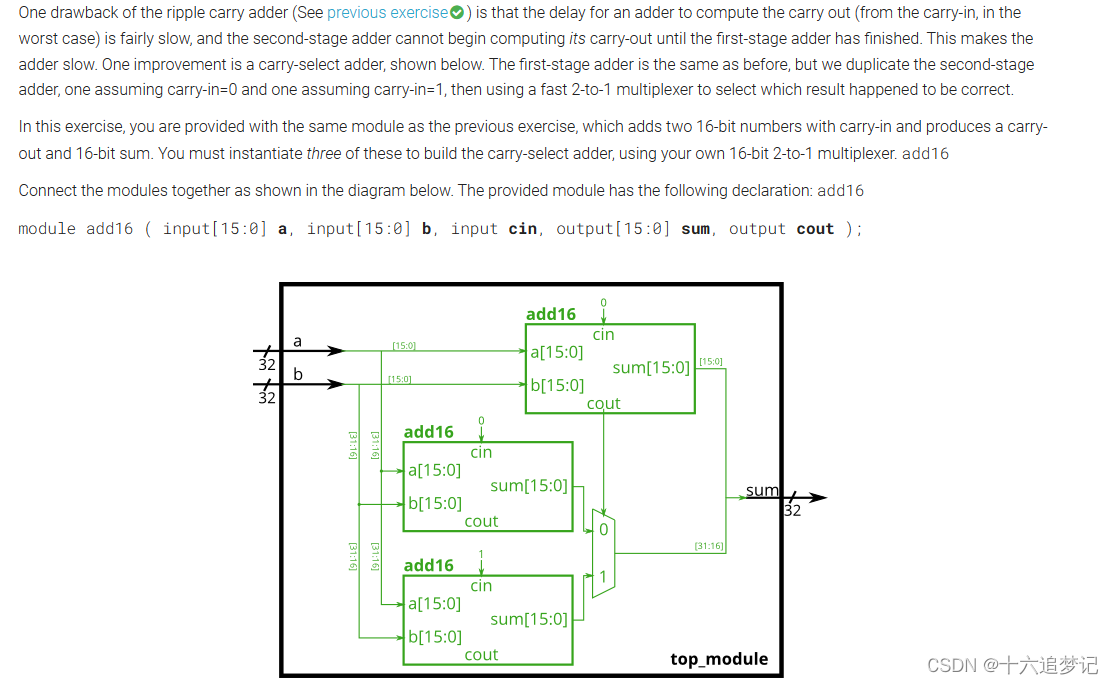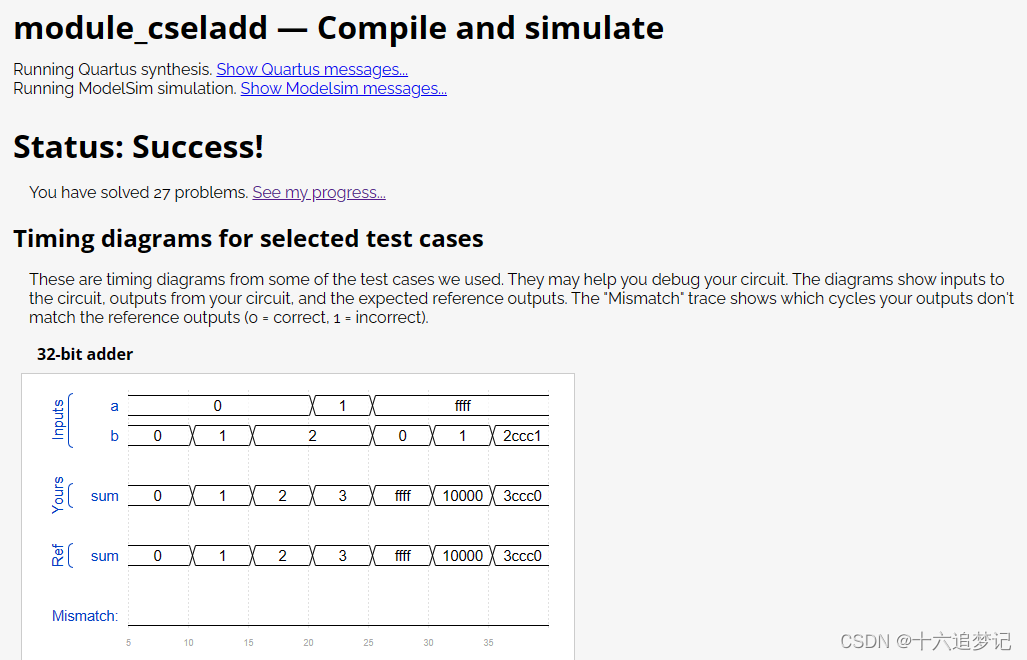Verilog刷题笔记14
题目:
One drawback of the ripple carry adder (See previous exercise) is that the delay for an adder to compute the carry out (from the carry-in, in the worst case) is fairly slow, and the second-stage adder cannot begin computing its carry-out until the first-stage adder has finished. This makes the adder slow. One improvement is a carry-select adder, shown below. The first-stage adder is the same as before, but we duplicate the second-stage adder, one assuming carry-in=0 and one assuming carry-in=1, then using a fast 2-to-1 multiplexer to select which result happened to be correct.
In this exercise, you are provided with the same module as the previous exercise, which adds two 16-bit numbers with carry-in and produces a carry-out and 16-bit sum. You must instantiate three of these to build the carry-select adder, using your own 16-bit 2-to-1 multiplexer. add16
Connect the modules together as shown in the diagram below. The provided module has the following declaration: add16
module add16 ( input[15:0] a, input[15:0] b, input cin, output[15:0] sum, output cout );

解法:
module top_module(
input [31:0] a,
input [31:0] b,
output [31:0] sum
);
wire [15:0]sum1,sum2,sum3;
wire sel;
add16 add161 (
.a(a[15:0]),
.b(b[15:0]),
.cin(0),
.sum(sum1),
.cout(sel)
);
add16 add162 (
.a(a[31:16]),
.b(b[31:16]),
.cin(0),
.sum(sum2),
.cout()
);
add16 add163 (
.a(a[31:16]),
.b(b[31:16]),
.cin(1),
.sum(sum3),
.cout()
);
always@(*) begin
case(sel)
0 : sum = {sum2,sum1};
1 : sum = {sum3,sum1};
endcase
end
endmodule
结果:

本文来自互联网用户投稿,该文观点仅代表作者本人,不代表本站立场。本站仅提供信息存储空间服务,不拥有所有权,不承担相关法律责任。 如若内容造成侵权/违法违规/事实不符,请联系我的编程经验分享网邮箱:chenni525@qq.com进行投诉反馈,一经查实,立即删除!
- Python教程
- 深入理解 MySQL 中的 HAVING 关键字和聚合函数
- Qt之QChar编码(1)
- MyBatis入门基础篇
- 用Python脚本实现FFmpeg批量转换
- 【INTEL(ALTERA)】Agilex7 FPGA Development Kit DK-DK-DEV-AGI027RBES 编程/烧录/烧写/下载步骤
- 华为无线ac双链路冷备和热备配置案例
- JavaScrip实现一个有时间限制的缓存类
- Ethercat“APWR配置从站地址”报文分析(0x0010:0x0011)
- acwing2241 礼物( FFT)
- JavaScript DOM表单相关操作之相关案例
- OpenCV4 工业缺陷检测的六种方法
- 在Java中正确使用Optional
- odoo16 产品变体之体验
- Mybatis配置-对象工厂(objectFactory)